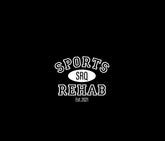Herniated Discs - How to Treat them in the Neck or Back
Hello, my friends! Today I want to dive into a topic that affects many individuals: cervical and lumbar herniated discs. If you've ever experienced the pain and discomfort associated with a herniated disc, you know just how debilitating it can be. But fear not! There are evidence-based ways to treat these conditions, and I'm here to shed some light on the subject.
Let's start by understanding what a herniated disc is. In simple terms, it occurs when the soft, semi-gel-like center of a spinal disc pushes through a weak spot in the outer layer. This can lead to nerve compression, resulting in pain, weakness, and even numbness. While surgery is sometimes necessary for severe cases, many people find relief through conservative treatments like physical therapy.
Physical therapy plays a crucial role in managing cervical and lumbar herniated discs. One of the key goals is to reduce pain and inflammation while improving mobility and strength. Techniques such as manual therapy, exercise, and postural correction can be highly effective in achieving these goals.
Soft Tissue Work
Manual therapy, including techniques like joint mobilization and soft tissue mobilization, can help alleviate pain and improve joint function. By applying gentle, targeted pressure, physical therapists can restore mobility and reduce compression on the affected nerves (1).
Corrective Exercise
Exercise is another vital component of physical therapy for herniated discs. Specific exercises can help strengthen the muscles that support the spine, promoting stability and reducing the risk of further injury. Additionally, exercises that focus on flexibility and core strength can improve posture and alleviate pressure on the discs. Research has shown that targeted exercises can lead to significant improvements in pain, function, and quality of life for individuals with herniated discs (2).
Posture/Exercise form
Postural correction is another essential aspect of physical therapy for cervical and lumbar herniated discs. Poor posture can increase stress on the spine and exacerbate symptoms. Physical therapists can assess your posture and provide guidance on proper alignment, as well as offer ergonomic recommendations for daily activities. By optimizing posture, you can reduce strain on the discs and alleviate pain (3).
Get Assessed by a licensed professional!
It's important to remember that every person's journey with a herniated disc is unique. Working closely with a skilled physical therapist is crucial to developing an individualized treatment plan. They will assess your specific condition, consider your lifestyle and goals, and create a program tailored to your needs.
In addition to physical therapy, other conservative treatments may complement your recovery. These can include modalities like heat and cold therapy, electrical stimulation, and traction. Your physical therapist will determine the most appropriate adjunct therapies based on your individual needs.
Patience
Remember, recovering from a herniated disc takes time and patience. Consistency is key when it comes to physical therapy exercises and incorporating healthy habits into your lifestyle. Don't be discouraged by setbacks along the way; progress is often gradual but rewarding.
If you're experiencing symptoms of a cervical or lumbar herniated disc, don't delay seeking help. A skilled physical therapist can guide you on the path to recovery, helping you regain function and live a pain-free life.
I hope this article has shed some light on evidence-based ways to treat cervical and lumbar herniated discs. Remember, knowledge is power, and with the right tools and guidance, you can overcome these challenges. Stay curious, my friends, and never stop seeking the answers you need for a healthier, happier life. For more information or to find a skilled physical therapist can guide you on the path to recovery, go to www.srqsportsrehab.com
References:
- Bono CM, Ghiselli G, Gilbert TJ, et al. An evidence-based clinical guideline for the diagnosis and treatment of lumbar disc herniation with radiculopathy. Spine J. 2009;9(7):609-614.
- Liu J, Zhou Y, Peng Q, et al. Effects of motor control exercise on pain and disability in patients with chronic nonspecific low back

